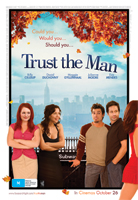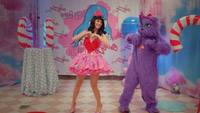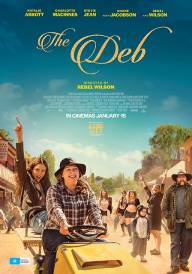Julianne Moore Wonderstruck
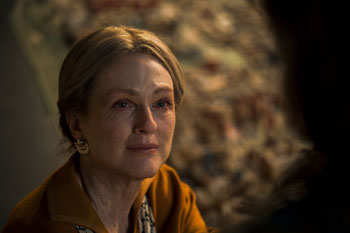
Julianne Moore Wonderstruck
Cast: Julianne Moore, Michelle Williams
Director: Todd Haynes
Genre: Drama, Family
Running Time: 117 minutes
Synopsis: In 1927, a young girl runs away from home in New Jersey and makes her way to Manhattan, hoping to find someone who was an important part of her past. Fifty years later, a deaf boy befallen by personal tragedy finds a clue about his family that leads him to run away from rural Minnesota to New York. As their adventures lead them to strange new places, where mysteries about themselves and the world seem to lurk around every corner, their stories of discovery reach across years of silence and regret, and find each other through a mesmerizing symmetry driven by wonder and hope.
For Rose (Millicent Simmonds), life under the strict control of her father is typical for a deaf child of her era, kept out of public view with little connection to the world outside of her beloved scrapbook, an elaborate, living work of art dedicated mostly to the career of an actress, Lillian Mayhew (Julianne Moore). When Mayhew comes to New York to open up a new play, Rose manages to find her way into Manhattan, hoping to connect to the silent movie star. For lifelong Minnesotan Ben (Oakes Fegley), his deafness is recent, the result of a freak accident that occurred shortly after the loss of his mother, free-spirited Elaine (Michelle Williams). Sorting through her things, he finds a clue about his unknown father – a souvenir book from New York City. He boards a bus, unbeknownst to his bereft aunt, and eventually arrives in Manhattan.
For both young people, their inability to hear and communicate (neither know sign language) makes their quest in the big city fraught with excitement and danger. Their simple goals quickly turn complex as the chaos and confusion of city streets derail them. Despite their maturity and determination, they are easily overwhelmed and reluctant to seek help. Both wind up seeking solace at the American Museum of Natural History, where new and old friends join them in confronting the questions that Rose and Ben so desperately need answered.
What Silence Looks Like
Release Date: December 14th, 2017
About The Production
What Silence Looks Like: Adapting Wonderstruck For The Screen
Anyone who read Brian Selznick's novel The Invention of Hugo Cabret, or saw Martin Scorsese's acclaimed film adaptation 'Hugo," probably won't be surprised to learn that Selznick's follow-up, Wonderstruck, documents a child's sense of awe as they discover an adult world that is often marked by loneliness, confusion and regret. And like its predecessor, Wonderstruck manages to infuse its story with a childlike sense of magic and possibility, rendered both in word and image. A master of what he calls 'bookmaking," Selznick's novels are as much informed by his amazing illustrations as they are by the vividly imagined characters and marvelous historical settings that populate his work.
'A lot of people who read The Invention of Hugo Cabret said to me that they like the sections of drawings, because it's like everything becomes quiet," Selznick recalls today about the inspiration for Wonderstruck. He goes on to explain how, 'You hear the words in your imagination, and then the narrative continues in the pictures but without words – I think it shifts into a different part of your brain. All those words fall away and we're just watching what's happening, and I was so intrigued by the feeling of quiet from looking at pictures." A similar thought occurred to Selznick when he watched the 2007 PBS documentary 'Through Deaf Eyes." 'There was a man describing deaf culture as a visual culture because the language is a visual language," says Selznick. Describing with his voice and in sign language, Selznick continues, 'I thought… Maybe if I make a book, where there are pictures that tell the story of a deaf character, it would parallel in some fashion the way that she experiences her life, because they would both be visual."
The result is a book that is unlike any other reading experience. Immediately after its publication in 2011, Wonderstruck became must-reading for people of all ages. The initial impulse to tell the story of a remarkable journey from the perspective of one deaf child grew into two stories and two journeys, told alternatively throughout the book. One story is shown entirely in Selznick's exquisitely detailed and delicate illustrations, in the tradition of the graphic novel – but without any text or words, the life as seen through young Rose in 1927. Born deaf, Rose lives with a father who hides her away, and she escapes into New York City hoping to make a connection with a famous actress, Lillian Mayhew. The sights of the great urban landscape at the height of the jazz age are experienced by the reader as if through Rose's eyes, the silence of her life all the more powerfully rendered.
The second story takes place fifty years later, and also features a young hero, Ben, traveling to New York City, this time looking for clues about his long-lost father. Ben is only recently deaf, so his story is told in traditional prose, as he experiences many of the same challenges and obstacles that Rose faces, but with a different set of memories, intentions, and abilities. Ultimately, of course, the two stories intersect; the girl who was once Rose emerges as an older woman who might hold the key to Ben's identity as well. But along the journey, the reader is drawn in and out of each story through Selznick's deft and confident play between these two very different modes of reading. What the reader 'sees" in Rose's story defies language; what the reader 'hears" in their head via the words in Ben's story spark the visual imagination in a way that no words could properly describe.
The Invention of Hugo Cabret as a film became a reality for Selznick only once Martin Scorsese became involved. Someone with such a rich sense of cinematic history, as well as brilliant technique, would be able to capture the book's magic. 'Sometimes people ask me for advice about how to get into the movie business," Selznick jokes. 'And I say, -Oh, it's easy. You make books for about 15-20 years and then you wait for Martin Scorsese to call.'" Indeed, even with the amazing success of Scorsese's 'Hugo" (which was adapted into a screenplay by John Logan), Selznick was sure that Wonderstruck would be even more difficult to get to the screen, simply given the unusual nature of the novel's main characters. 'I thought, this book can't be adapted," explains Selznick. He goes on to describe that, 'Unlike -Hugo,' where it's one story told with words and pictures, Wonderstruck is designed to be two stories, one with pictures only, one with words only. I made the book thinking that it can't be adapted."
But finishing the book and seeing how successful Scorsese and Logan were in making 'Hugo" a reality prompted the writer to reconsider. 'I began to think maybe there were ways," he says. He took on the initial exercise of drafting a screenplay on his own, with some input from John Logan. 'He really took me under his wing, and gave me lots of notes and guidance. His first one was the toughest," recalls Selznick with a chuckle. 'Cut the first 50 pages in half." With Logan's veteran eye to keep him focused, Selznick settled on a screen worthy equivalent of his literary technique; Rose's story, set in 1927, would be shot in black-and-white and in the aesthetic mode of a late-era silent film, while Ben's would be shot in color and with a fully realized soundtrack. 'We can weave those two stories together, and play with sound in silence, and include music. It's not restricted to words and pictures like is has to be for the book, and it's something that I thought would work for the screen," explains Selznick.
A Project Finds A Team
One of the people Selznick showed his draft of a film version of 'Wonderstruck" to was another member of the esteemed 'Hugo" crew, veteran costume designer (and a three-time Oscar winner) Sandy Powell, whose passion for the project and creative vision ultimately resulted in her assuming the role of executive producer as well as costume designer. 'Even before Brian thought about writing the script," Powell remembers, 'I had said to him about the book, wouldn't this be great as a film? And even at that point, I thought it would be great if Todd [Haynes] did it." After reading one of Selznick's early draft, Powell knew her instinct was spot on; 'I'm going to ask Todd if he is interested," she resolved. Haynes was in the midst of editing his most recent film, 'Carol," and Powell knew he would be preoccupied. 'But towards the end of that process, I at least got Todd and Brian to meet. I knew Todd would instantly like him and be more inclined to read the screenplay and take an interest. He did straight away, which was thrilling for everybody."
With dozens of films to her credit"many of them lush, visual masterpieces by internationally acclaimed directors who demand precision and perfection"Powell's creative sensibilities told her that this was a special, almost magical project. 'I just loved it," she enthuses. 'I loved reading the book, where the story is told purely from visuals…but the most interesting part was the theme of deafness, and dealing with deafness, something that would be really interesting to tackle in film. How can you do that? It's interesting to see how sound and lack of sound is going to work in this story."
A dedicated cinephile, Selznick was flattered that the renowned veteran Haynes wanted to become a part of 'Wonderstruck," though like many viewers, the fit might seem a bit odd at first. After all, Haynes is known for making provocative films about very 'grown-up" situations related to sexuality, identity, and social responsibility. While his films do often feature children as characters, he is not the first person one might think of to make what is essentially a film about children for general audiences. But Haynes' strengths play right into the possibilities in Selznick's story, according to the author.
'I had never thought of Todd," Selznick admits, 'but as soon as Sandy mentioned his name I thought, -there's no one else who can do this.' Todd is one of the few directors whose intellect matches their artistry. You don't feel any sort of cold, clinical distance, when you see a movie of his. You feel the characters, you feel the life of these people, but you understand that he is in total control of the world in which they exist. He's a master of genre. He can make a movie feel like it came from any time period. The sensitivity that he brings to all of this, the queerness, the sense from seeing the world from an outside perspective – that was exactly how I was thinking about the way these kids in the book, as deaf kids, understand the world around them. They're both in search of family. They're both in search of community…in search of a history. And that is and feels in so many ways, part of what Todd has been working with from the very beginning."
For his part, Haynes was immensely impressed by the quality of Selznick's adaptation. 'What was so remarkable," he recalls, 'is that this is the first adaptation Brian had done of one of his books. It was so powerfully cinematic and it basically invited a maker of film into the process of re-visioning his beautiful book through a cinematic view which is what I responded to initially."
When describing the source material, Haynes says, 'The book works at the deepest level, evoking the imagination and allowing spaces to fill in the gaps yourself, and you take possession of it and it's your own. The fact that it created a dialogue between these two periods of time, but having the continuity of New York fifty years changed"from the 1920s story to the 1970s story"just begged to be turned into the language of cinema."
Haynes' longtime producer Christine Vachon adds that in addition to the finely tuned characters and remarkably original story, the distinct timelines were something that gave the project a creative center and depth that made it a worthwhile challenge. Vachon explains, 'The way these stories intersected in unexpected and beautiful ways means there is an evocation of childhood in both stories that also felt very authentic. There was the challenge of recreating 1970s New York…and I grew up in New York City, I was a young teenager in the -70s, so that really resonated with me."
That personal connection was important to Vachon, as some audiences might have forgotten about New York City's bleaker years. 'That was the time of that famous Daily News headline – -Ford to City: Drop Dead,'" she recalls about New York's national reputation as decaying and crime-ridden. Indeed, viewers of 'Wonderstruck" who are more familiar with the New York of Woody Allen or 'Sex and the City" might be thrown by 'Wonderstruck"'s spot-on depiction of a once-glorious metropolis struggling to survive. 'When we were shooting at the Port Authority," recalls Vachon, 'one of the younger PAs turned to me and said 'Oh, but it was never really this dirty…and I thought -are you kidding me, this is nothing compared to what it was like!' The infrastructure was crumbling, the city was bankrupt, street crime was up, people were fleeing for the suburbs, so the character of the city was very different – still exciting, but in a very different way."
'The story works so well because 1927 was a period of ascendancy and hope, and the city was still being built," adds producer John Sloss. 'It was New York on the rise. But 1977 was the nadir and falling apart, and that's just factually true, and something that Brian really conveyed in his novel that is a key element of the film." Sloss believed so much in 'Wonderstruck" that he came aboard as a full producer: a renowned dealmaker in the world of independent film for the last thirty years, Sloss is frequently credited as an executive producer, rarely taking on a more direct role in the day-to-day production work as he is with 'Wonderstruck." But, the combination of the creative team and the material was inspiring to him. 'It was the script – Brian is brilliant, and wrote a brilliant script. We were able to say to potential financiers, -There's no reason to make this film if you're going to make it without this sort of inherent magic.'" It wasn't long before Sloss was able to set up the project on a workable but modest budget for Amazon Studios. 'Amazon is a big corporation," Sloss concedes, 'but it's also very familiar. Ted Hope [head of Amazon Studios' film production] is someone we grew up with and he's very close with Christine and Todd, someone we've worked with for a long, long time. Amazon Studios was smart enough to bring in a crew of people who are immersed in the independent film community, and they got the good ones."
Worlds Of Silence
Studies indicate that about 1 in 20 Americans is functionally deaf; however, the vast majority of that population (well over 95%) become deaf long into adulthood, often as a result of progressive hearing loss that can be addressed and adapted to over time. The population of deaf children"some of whom, like Rose, were never able to hear, and others like Ben who become deaf because of illness or accident" is very small. For members of the deaf community and their allies, that has not prevented recent generations of deaf artists from expressing themselves creatively through storytelling and the visual and performing arts. The Tony Award-winning National Theatre of the Deaf celebrates its 50th year of existence this year, and Deaf West's production of the musical 'Spring Awakening" has proven to be a hit with all audiences. However, the crossover of deaf characters into mainstream culture has been largely restricted in recent times to adult characters, from dramatic fare like 'Children of a Lesser God" to Marvel Comics' deaf Avenger 'Hawkeye."
The result is that there isn't much precedent in cinema for telling a story"two stories, in fact"from the perspective of a child who cannot hear. Because both protagonists in the film set out on their own, there is no guardian or protector, no 'translator" (at least at first), and neither of them know how to use sign language. 'Wonderstruck" cannot rely on secondary characters, subtitles, or other familiar narrative devices that might be used as a point of access for a film viewer.
Selznick had consulted with a variety of friends and colleagues involved in deaf culture and education as he was writing the novel, wanting to make it as authentic to the deaf characters' experience while still not making the story exclusively about the characters' disability. His own brother is deaf in one ear"the state that Ben begins in, before an accident shortly after his mother's death removes the hearing from the remaining ear"and that provided a different kind of perspective than others he knew who had been fully deaf for a large portion of their lives, like Rose. But books, at least the traditional kind on paper, don't have an audio component. Even socalled 'silent" films were never silent, so Haynes knew that he would have to address the complex problem of what 'deaf" feels like while still employing some sort of sound track. 'What's so exhilarating about -Wonderstruck' is that it was always designed as a halfsilent film," the director explains. 'The black-and-white story would be told as a silent film, and silent film plays a role in the story itself – Rose's mother is a silent screen star. Meanwhile, Ben, who's newly deaf, spends a good hour of the film on a silent voyage not conversing with anyone, just observing. So, the two stories interact without sound in very different ways. It allows for a very rich and nuanced role that the sound design plays between music and ambient sound, between subjective and objective interplay of sound that Ben is sensing, since he just lost his hearing. There's the suggestion that there's the phantom sound that haunts him, the memory of sound. I took this movie on because I had never made a film aimed at younger audiences and about younger subjects exclusively. I thought, there's a way to ignite the imagination of kids without the conventions of sound, just like how you filled in the gaps of the illustrations. When you ask the audience to fill in gaps, it ignites certain powers we all possess as viewers that we sometimes overlook."
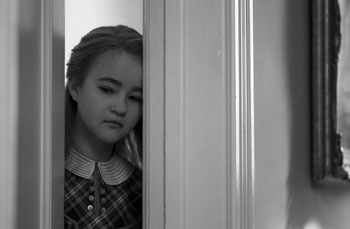 Although it might not be immediately evident to viewers of the film, Haynes and his team went to great lengths to ensure that deafness was embedded in the film's creative process in a number of ways. For example, in an early scene from Rose's story, she visits a theatre where silent film star Lillian Mayhew (played by Julianne Moore) is in rehearsal for a new play. Many of Lillian's co-stars in that play are portrayed by hearing-impaired actors. 'We cast seven deaf actors as hearing characters in the film, including Millie," Haynes explains. 'The most prominent deaf actor cast was Lauren Ridloff, who plays Pearl, the Maid. Additionally, there was Dr. Gill, the deaf teacher, one of the policemen, Miss Conrad (who works at the museum) and the Director and Lead actor at the theater. Since they all appear in the silent portion, they were afforded the unique task of playing hearing characters. A lot of these people came from deaf theatre, and brought their own experiences and points of view to the process It was one particularly unique way in which Deaf artists and contributors were woven into our experience making the film. That was really awesome."
Although it might not be immediately evident to viewers of the film, Haynes and his team went to great lengths to ensure that deafness was embedded in the film's creative process in a number of ways. For example, in an early scene from Rose's story, she visits a theatre where silent film star Lillian Mayhew (played by Julianne Moore) is in rehearsal for a new play. Many of Lillian's co-stars in that play are portrayed by hearing-impaired actors. 'We cast seven deaf actors as hearing characters in the film, including Millie," Haynes explains. 'The most prominent deaf actor cast was Lauren Ridloff, who plays Pearl, the Maid. Additionally, there was Dr. Gill, the deaf teacher, one of the policemen, Miss Conrad (who works at the museum) and the Director and Lead actor at the theater. Since they all appear in the silent portion, they were afforded the unique task of playing hearing characters. A lot of these people came from deaf theatre, and brought their own experiences and points of view to the process It was one particularly unique way in which Deaf artists and contributors were woven into our experience making the film. That was really awesome."
Similarly, Haynes decided to immerse some of his hearing cast into a new frame of mind through some old-fashioned acting exercises conducted with some new technology. With young Oakes Fegley (as Ben), Haynes employed noise-cancelling headphones on a walking tour of the portions of New York City where the action takes place. Haynes remembers, 'It's a grossly reductive version of what a deaf person might experience on a daily basis, and we did it in a very condensed amount of time, but it was so intensely memorable and vivid, it was an indication of how perception can be heightened with a diminished range of senses, and how experience is heightened. I'll never forget the color and images that afternoon. It was the way my eye was registering the world and touch and smell and shards of light hitting the bits of the city as we walked around. When we took off the noise-cancelling headphones there was a dullness to life – it just shows how the senses could be heightened."
Casting Familiar Stars – And Finding New Ones
Anyone who has ever made a serious, ambitious and dramatic film with children as the main characters knows that finding the right child actor to bring a role to life can be a daunting challenge. Often operating with a minimum of trained technique and 'life experience" that make for strong film performance, young actors often work by instinct and have to 'get lucky" with the right combination of material, character and director. 'Wonderstruck" would be no different "except that both of the main characters, in addition to being complex individuals experiencing an almost fantastic once-in-a-lifetime journey through the world's most famous city, also happened to be deaf.
This was slightly easier for the role of Ben who, only recently deaf, is comfortable speaking out loud and has lived in communication with other people, a more-or-less 'normal" kid who grew up with a single mom in rural Minnesota before fate and circumstance change his life forever. Although only eleven years-old when he was cast as Ben, young Oakes Fegley had the right combination of presence and experience for Haynes to be confident in the performance. 'Oakes is a very precocious, and intensely bright young man," Haynes says. Ben also has the benefit of a sidekick, Jamie"initially conceived of as a Caucasian child in the novel, Haynes suggested to Selznick that Jamie be played by a Latino actor, to reflect 1977 New York City's demographics more accurately and bring some perspective to how these two 'outsiders" connect. 'I knew right away that this was a fantastic idea," Selznick says about the change. Jaden Michael, an actor Haynes brought on board as Jamie, was praised for his maturity. 'He is a lovely actor with the dearest, most generous soul," says the director.
Fegley drew rave reviews for his performances in last year's 'Pete's Dragon," holding his own against no less than Bryce Dallas Howard and Robert Redford. Even though Ben is a deaf child from the year 1977, Fegley saw a lot of parallels between himself and the character. 'I think he likes to learn, and I like to learn," he ponders. 'Ben is very curious; he has specific things that he has found out that he likes, and he likes those things a lot." He was also appreciative to conquer the challenge of representing deafness. Recalling his noiseless afternoon walking around the city with Haynes in headphones, he remembers, 'It was crazy – you pay a lot more attention to visual detail, looking at people's lips, smelling things. I also met with some deaf people before we started filming, and that has helped me figure out what it's like to be deaf."
'The story made me cry, and that's not something I do often," says Jaden Michael, a native New Yorker who has been acting since the age of three and already counts no less than Viola Davis (in 'Custody") as a onetime costar, and most recently appeared in 'Paterson" for acclaimed indie icon Jim Jarmusch. Michael can't hide his enthusiasm for working with Todd Haynes. 'Todd Haynes is an amazing director. An amazing person. He's inspiring. You get into the character, but Todd Haynes just gives you the extra push and he's a wonderful director. I mean, the awards say it all. He's an awesome person to be around. He has a wonderful finesse about him, you just get a little bubbly happy feeling just sitting next to him."
But finding the right performer to play Rose was going to be more of a challenge, and from the beginning, Haynes, Selznick, Vachon and the rest of the team were determined that the character needed to be played by a deaf actress, to underscore the authenticity of Rose's experience as well as provide more opportunities for the production to be informed by real-life deaf culture. 'During the silent era," explains Selznick, 'deaf actors were employed all the time because they were so expressive, they could tell stories with their bodies. I thought we could pay great homage to the history of cinema, and we could have most of them do something they don't normally do, which is play hearing characters." The exception is the permanently deaf Rose, and that meant that casting director Laura Rosenthal had her work cut out for her. Contacting schools for the hearing impaired and deaf theatre companies all over North America, she led the search for a young performer who shared Rose's condition and could also render her professionally and with the complexity that Selznick's story demanded. 'I imagine casting is a hard enough job to find the right person for each part, so the pride that Laura and her team then took in finding Millicent Simmonds is great," says Selznick.
Utah native Simmonds, thirteen years old when she was cast, does not have an extensive professional career, but her work on the set and her contributions towards the fleshing out of Rose has left her much older and more experienced colleagues almost speechless. That was evident from an early audition tape that Selznick still tears up as he describes it. 'I have to learn how to not get emotional when I talk about Millie," he says. 'They asked her to make a tape and just tell us about herself…and with her mother, she made some posters to show along with the English translation of what she was signing. She was able to sign to the camera who she is, her name, what she was thinking – and then hold up a poster, for us hearing people. Then she would put that poster down, sign the next part…it was her pride at being deaf and the beauty of the language that she felt, and she was so excited to share and talk about. It was just beautiful." Working with Simmonds, particularly in the scenes where other deaf actors were present and felt empowered to contribute to the process, was an eye-opener for director Haynes. Working through a hired translator (and sometimes Simmonds' mother, fluent in sign language), Haynes found his young charge imaginative and responsive. 'One of the most moving and informative parts of making this film was bringing Millie into the fold and sharing it with her," he says. 'We just lucked out… She had never been in front of a camera before, and her ability to evoke emotion, and her ease with her body was just remarkable."
Any young teenager working with an Oscar Award-winning cast and crew on their first film is likely to be a bit daunted, and Simmonds is no exception. 'I never thought I'd be doing this," she says in sign language. 'I thought I would just sort of lead a normal deaf life. You know, and try to get through my life and deal with the typical problems you face growing up. But this, this is an amazing experience. I'm helping Rose come to life, and by bringing her to life it's making the movie come true. The crew is like my family – it's really been an amazing experience."
And of course, she is more than a little, let's say, 'wonderstruck." 'I didn't think it would be this big a deal. But when I got here and I was like -What?! Todd Haynes?! Wait, wait the real Todd Haynes who wins awards and makes these awesome movies?!' I mean, this is crazy. And Julianne Moore! I mean, when I was little I always looked up to her, she is the person I aspired to be. She's an Oscar-winning actress and here I am. This is crazy. And they're both so nice and so sweet to me. And they're not afraid of me, they're really open and comfortable working with me." Haynes is now a Simmonds fan in return. 'This a singularly special, unique, strong, and self-possessed person who taught us everything," he says of Simmonds. 'She really moved and touched the crew and all of us and informed us deeply of what we were doing."
About the material and the character that she plays, Simmonds is equally enthusiastic. 'I was so surprised that a hearing person would write this book, would tell a story about two deaf people and it just, it really grabbed my heart. I thought, the person who ever wrote this is a special person… I loved the drawings and the artwork. I loved how the two stories blended together." As for Rose, Simmonds finds much fodder for her character. Noting that her own family has been generous and supportive (they all use sign language, and new text-based technologies have made communicating with the deaf much easier than it was in the 1920s), Simmonds sees how different things were for Rose and what a challenging obstacle her deafness must have been. 'Rose's family, they don't really understand how deaf people live in the world, and they're afraid of her. They're really afraid of her…it must be really hard to be Rose."
Though she recognizes that Rose's father, a physician ashamed of his daughter's condition, means well by trying to keep his daughter 'safe" and essentially locked up, Simmonds also thinks that Rose's absent mother factors into Rose's psyche in a complicate manner. At the beginning of the story, Rose seems to suspect that famous actress Lillian Mayhew is her real mother, and that possibility suggests more than just abandonment. 'She's a young mother, almost a little too young," Simmonds imagines, 'and I think maybe she didn't want children. I think she wanted to be free and independent, and I understand that as a woman back then, she didn't have a lot of rights. Maybe she wanted to be the one to show her daughter that women can do things and be independent," she concludes as to what Rose finds so fascinating about the mysterious Lillian.
Rounding out the principal cast as Lillian, and as an older Rose, is Julianne Moore, who has worked with Haynes before on several projects ('Safe," 'Far from Heaven"), who was thrilled to take on the challenge of performing multiple parts as well as bringing Selznick's novel to life. Though her initial impression as Lillian Mayhew is important in establishing Rose's journey, it was playing the elder Rose, 50 years on, that Haynes knew would be a worthy challenge. 'As always, Julianne does meticulous research and wants to feel confident that she really has explored all the parameters of the role and its terrain," he says, noting that she immersed herself in learning ASL to better communicate with Simmonds and the other deaf actors on the set, as well as to build her character. 'She worked with great translators, but she worked with non-speaking deaf people as well. And because her brother in the movie"played by Tom Noonan as an adult and Cory Michael Smith as a younger man"signs with her, but he's a hearing man, he would sign differently than a non-hearing person would and those differences were very, very important to Julianne."
A fan of Selznick's and the novel, Moore knew that the author and producers, Powell and Vachon, were eager for her old friend Haynes to come on board, and was initially skeptical, only because she thought Haynes preferred to only direct projects that he had initially written and conceived of himself. But once Haynes was on board, she says it wasn't a surprise to see the appeal. She explains, 'I'm not surprised because of the depth of the storytelling, and the interesting characters and the huge amount of emotion and the tremendous production value. All of those things are things that Todd really responds to."
And working again with Haynes was a no-brainer for the veteran actress, who was just coming off her Oscar-winning performance in 'Still Alice." 'We've known each other for twenty years now," she explains, 'and he's someone who is as gifted visually as he is with language, and that's very unusual. You know you can always rely on him for this extraordinary visual storytelling. It's pleasure because he gives you such a tremendous frame to work in."
It has also been a growing experience, both when the cameras were rolling, as she took on the challenge of playing to different characters fifty years apart in time, as well as in between takes, fully absorbing the magnitude of the story. 'I think one of the things that's been really wonderful for all of us working on this movie is how much we've learned about deaf culture. I think anytime you're learning another language it kind of expands your brain and opens up possibilities for you in terms of thought and relationships, and this is a true example of that. It's been, that's the most exciting part, actually, of making this movie, our introduction to deaf culture."
And she is equally thrilled by her young co-star as Millicent Simmonds is with her. 'Millie just clearly has a natural ability for it"not just for being at ease on camera but for vivid emotional storytelling. You see it in her body, you see it in her face, you see it in her complete understanding of who this character is and it's a wonderful thing. Everyone has noticed it; this is also a crew that I've worked with for a long time, and we watching her work and saying how extraordinary she is. And they're like, -How does she do it?' And I said, -Who knows, I think she's just a natural.'"
One Place – Two Time Periods
It's not a stretch to say that Todd Haynes and his crew are experts at period recreation, but the filmmakers' ability to capture a specific time and place is often more than just a matter of getting the details right. For example, the lush suburban 1950s setting of 'Far from Heaven" is as much a tribute to the films of Douglas Sirk and other directors of the era as it is about precision and accuracy, while the dazzling 1970s of 'Velvet Goldmine" owes more than a debt to the stylized glam rock lifestyle of its characters as much as it does to the real time and place. That ability is demonstrated again, twofold, in 'Wonderstruck," as the story takes place fifty years apart and almost entirely in New York City, with much of the action occurring at the iconic American Museum of Natural History.
The first important element for Haynes, his team and moviegoers, to appreciate is that the dates selected by Selznick aren't random. 1927, the year that Rose ventures forth from her home into the city, is the year that is often remembered as the turning point in film history, when Warner Brothers' 'The Jazz Singer" ushered in the era of sound moviemaking after its debut in October of that year. In fact, most film historians note that the transition to sound film dates back much earlier and the full impact of 'talkies" was not realized until a couple of years later, but for a 'symbolic" point in time, 1927 will do. Brian Selznick points out that this key event in 1927 is often pointed out as 'a triumph in technology, something that moves everything forward. But from the perspective of deaf culture and deaf history, it was a tragedy for the deaf community, because it separated them from the audiences who were enjoying the movies. Before that, you could go as a deaf person, and the action is mostly happening visually on screen. I had never thought about this moment as something that would be problematic for part of the population."
Indeed, though the character of Lillian Mayhew is not deaf, she finds herself in an equally troubling transition from visibility to perhaps irrelevance. As a young girl, Rose can't quite appreciate it, but Lillian's stock as a film star is clearly falling with the coming of sound, and her return to the stage is more of a desperate act to keep her fame alive than an ambitious career move.
When he thought about setting Ben's story fifty years later, the year 1977 also had a particular resonance for Selznick, as it would for anyone who remembers the image of New York City and the events of that year. 'Fifty is a nice round number," Selznick concedes. 'I was eleven in 1977, and that was the summer of the blackout, one of the lowest points in New York history. I had forgotten that the blackout actually happened over my birthday, July 14th, and was caused by a lightning strike – and I knew that lightning was going to play a part in the story, that Ben was going to go deaf because of a lightning strike." Beyond the personal and creative synchronicity, it also felt like an appropriate balance for the more optimistic and dazzling New York of flapper-era 1927. 'I thought of Hugo as a kind of love letter to Paris," Selznick adds. 'And I thought well, you know, maybe I could make a book that was kind of a valentine to New York, and it might be more powerful if it's set at New York's lowest point."
'The fact that the story created a dialogue between these two periods of time, while retaining the continuity of New York, just begged our foregrounding of the cinematic styles of these two eras and how they had changed," he says. 'First, it was an invitation to go back to the crowning years of silent film and some of its greatest masters--Murnau, Vidor, Chaplin--and study how it was they accomplished what they did. And what they accomplished was nothing less than the invention of the language of film, not to mention some of its greatest masterpieces. But for Rose, the looming transition from silent film to sound takes on a profound meaning, severing her from a universal experience the hearing world takes for granted. Contrast to that what was happening fifty years later, directly following the demise of the studio system, in the filmmaking styles of the 1970's, a period of independent vision and artistic invigoration which continues to inform filmmakers today, and there you have the radical spectrum offered by Brian's parallel stories."
Bringing those eras to life fell to Haynes' veteran design collaborators like Sandy Powell, production designer Mark Friedberg and cinematographer Ed Lachman. There was no question that production needed to be centered around New York – so much of the film occurs at the museum, that a stand-in urban environment on a backlot or in Canada would be impractical. But New York of the present day actually barely resembles the New York of four decades ago, let alone one nearly a century in the past. Mark Friedberg, who jokes that his preparation for 'Wonderstruck" was 'spending the better part of forty or fifty years driving around the city and learning its ins and outs," explains: 'Most places we went to shoot our 1970s sets, we were ruining people's neighborhoods, just making them look trashed." Ultimately, Friedberg found some portions of Bedford-Stuyvesant and Crown Heights that have not yet been gentrified, and could pass"with a lot of art direction"as the Upper West Side of 1977.
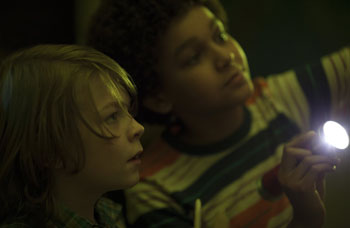 Citing Haynes' visual inspiration in films like 'The French Connection," 'Mean Streets" and 'Taxi Driver," Friedberg observes that, 'The last vestige of the -mean streets' is hardly left in the five boroughs… So a lot of our art direction on the streets is a lot of distressed signage and storefronts. And Todd's been very particular about the art direction of our garbage. In those movies, the ground has garbage blowing all over the place. We forget how badly behaved we once were, and how dysfunctional we had become." Actor Oakes Fegley agrees. He explains, 'I'm from the 2000s, so it wasn't easy for me to understand what it was like. But I watched a movie about the 1977 blackout…and in 1977, New York was not the best place! It was dirty, just not a very nice place…completely different now."
Citing Haynes' visual inspiration in films like 'The French Connection," 'Mean Streets" and 'Taxi Driver," Friedberg observes that, 'The last vestige of the -mean streets' is hardly left in the five boroughs… So a lot of our art direction on the streets is a lot of distressed signage and storefronts. And Todd's been very particular about the art direction of our garbage. In those movies, the ground has garbage blowing all over the place. We forget how badly behaved we once were, and how dysfunctional we had become." Actor Oakes Fegley agrees. He explains, 'I'm from the 2000s, so it wasn't easy for me to understand what it was like. But I watched a movie about the 1977 blackout…and in 1977, New York was not the best place! It was dirty, just not a very nice place…completely different now."
Though perhaps a bit more glamorous and in ways easier to disguise because of the freshness of the architecture and built environment, bringing 1927 to life was also quite a challenge, particularly in finding a 'typical" Broadway theatre where Rose tries to find Lillian Mayhew at the beginning of her journey. Friedberg explains, 'There are certain theaters that are historically preserved… A very limited amount of theaters in New York that were available, or even things that could be theaters or look like theaters. We looked at them all – we looked at Broadway, we talked about big digital expansions and it just didn't feel right. Then I was driving around Crown Heights, and I screeched the car to a halt, and there was a building I had never seen before, which is always unusual for me. It was a church and it had these signs covering all of it, and it was an unusual building and I saw this strange detail from under the signs and we looked it up and found out that it was the original Loehmann's department store. Under these signs were some spectacular friezes, which the people who ran the church didn't even realize they had under there. After some negotiation, we were allowed to build our set and take off all of the church signage, which was nothing special, and build our set. But actually, what we uncovered was this beautiful building, unseen before, at least for the last 75 years. And that became our Promenade Theatre."
But for Freidberg and many of the New York based crew"many of whom, like Friedberg and Vachon, grew up in and around New York City"the high point may have been working so many long nights, after hours, in the Museum of Natural History. It has stood as a benchmark for New Yorkers in film and literature for decades, from Holden Caufield's remembrances of sister Phoebe in J.D. Salinger's 'Catcher in the Rye" to the playful tweaking of the museum's exhibits in the 'Night at the Museum" films with Ben Stiller.
'That was a place where I've grown up and have great reverence for and know well," says Friedberg. 'It's not a place where I'm trying to influence terrifically from a design place. I'm trying to honor it. There's been a lot of updating that went on over the last fifty years, so we couldn't just transform it back. Fortunately, the museum was very cooperative with us, in an unusual way…a way they have never been with any other project before. When Brian wrote it there, he got to know the people in the museum and brought them into this process of research and how that research became the meat of his story. The book is about the amazing power of curation, about the inherent energy of things in the museum, and they were very excited about partnering with us. They sensed that this story isn't trying to exploit anything about the museum and quite the opposite that we were trying to honor it."
Hard Work, Dedication… And A Little Bit Of Wonder
In a sense, the backdrop of the museum"which, in 'Wonderstruck" is not just a location, but a place where collected precious objects hold the secret to Rose and Ben's mysterious connection"is a perfect reflection of the magic that Selznick's novel and now Haynes' film attempts to render. While not relying on the supernatural or any sleight of hand, the 'wonder" implied in the title emerges as a combination of time, space, character and circumstance that would inspire awe in viewers of all ages and persuasions, just as they might feel encountering one of the world's greatest collections for the first time. Mark Freidberg explains, 'You know, the dioramas there are really like short films. They're not much about frozen moments but they're more about what's just happened and what's about to happen. I think they are great places to get lost in your imagination. And that's where these stories intersect, in this cabinet of wonders, and the idea that this sacred room has maintained the energy of what happened fifty years ago. It still lives in there enough that it propels Ben to the truth that he's really looking for."
Producer Christine Vachon, who has produced all of Haynes' films and is thrilled to be still working with him 'at the top of his game," points out that despite the 'family" nature of the film and the young age of the protagonists, adults will have no lack of wonder. 'Both the characters' journeys, they're really about people discovering that they're artists, and I think that will speak to a lot of people who are trying to figure out who they're really are. I mean look for anyone who has kids and has suffered through the majority of children movies"not all, but the majority"and I know how grateful I would be to have something I can watch with my child and appreciate along with them."
Todd Haynes agrees, pointing out that the complex storyline"which winds up with surprising revelations about Ben's past as well as opening a window towards both characters' potential futures"is likely to resonate with all viewers. 'In many ways, the story functions as a mystery, in turn answering and then uncovering more questions about what is driving each child's journey and why they are being paralleled. In the end, we learn the value of following your own instincts and curiosity and overcoming your fears through various kinds of creative practices… It's a transformational power that we have in our own hands. It's very much about what you can learn and experience through your own eyes and what you can accomplish with your own hands. Not just overcoming loss and the unknown, but how to reach out and communicate with one another."
For someone who will spend much of her life communicating with her hands, young Millicent Simmonds sees value in 'Wonderstruck" beyond the film's more obvious themes. 'I think this movie will help a lot of deaf kids," she signs. 'It will show them that they can do everything, that they can do anything. And it will help hearing people to understand how people live, how deaf people live and the struggles that they go through. I'm so happy to help spread that message."
What Silence Looks Like
Release Date: December 14th, 2017
Have You Seen This?
MORE


